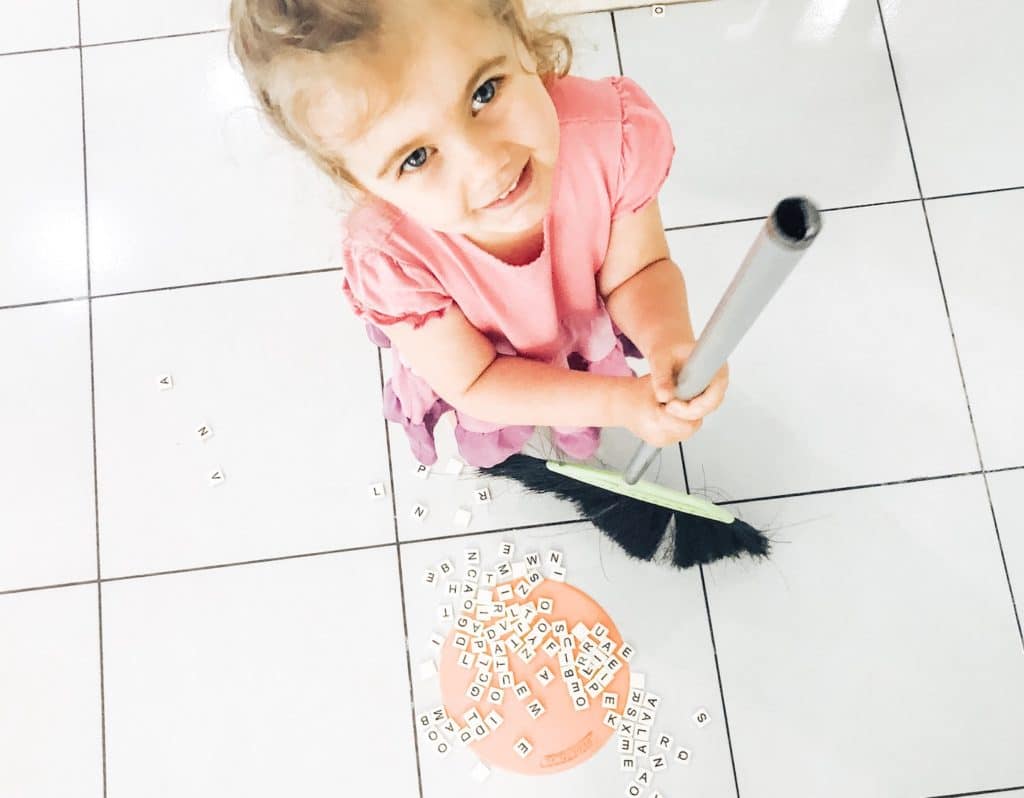
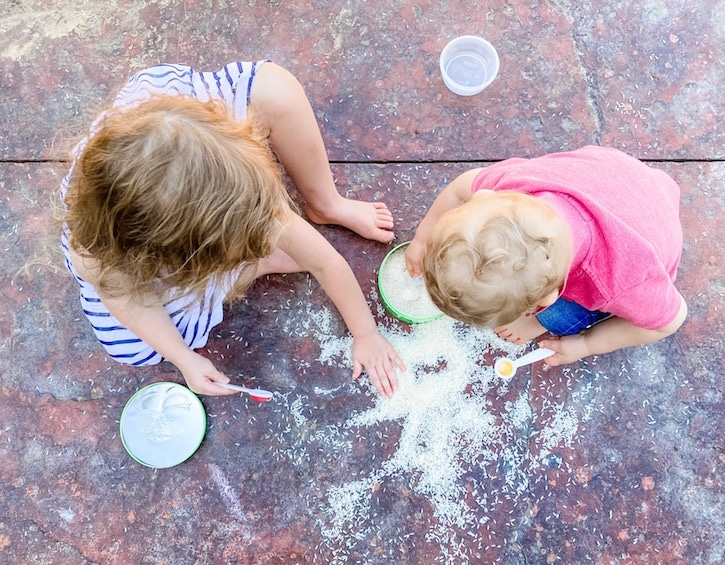

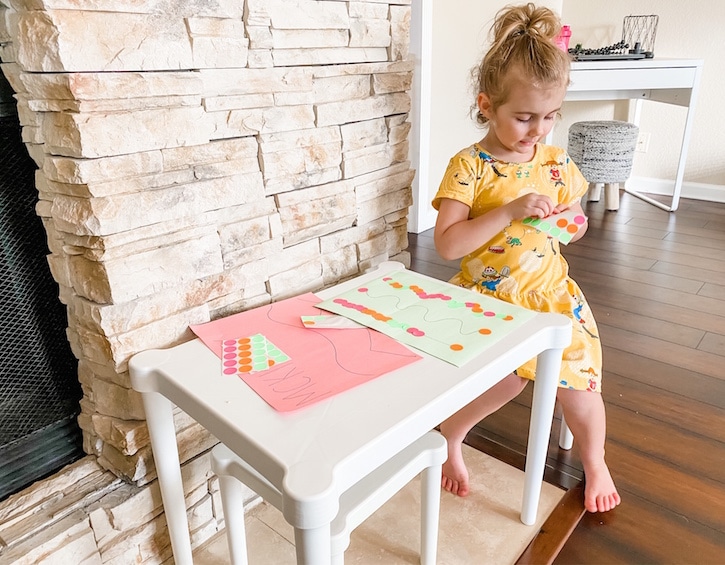
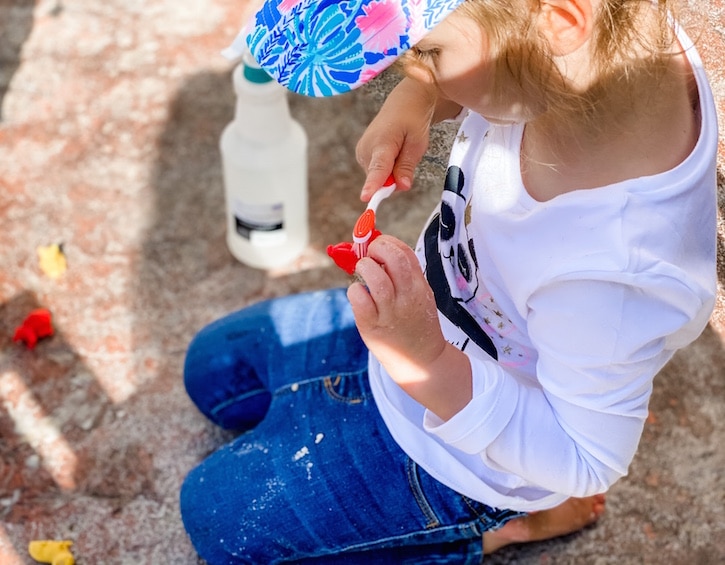


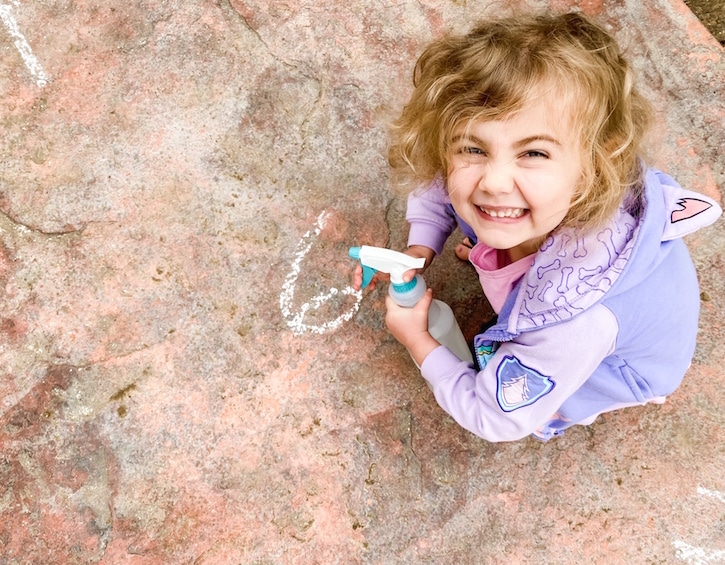

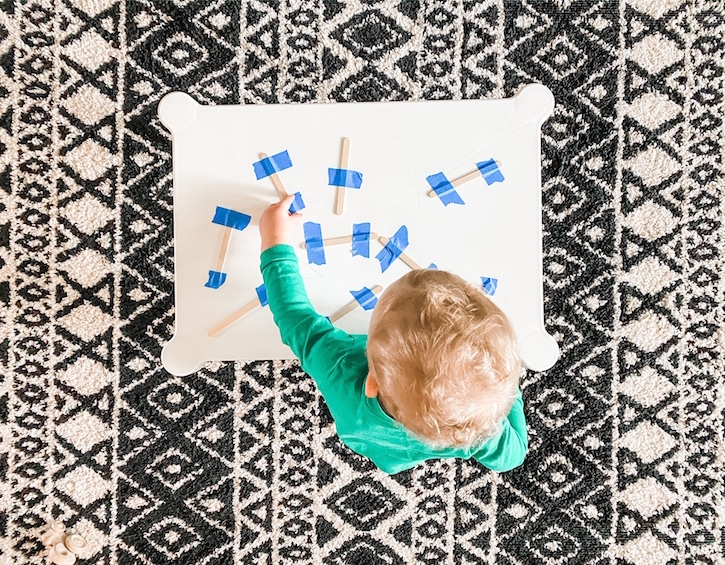

Looking for fun indoor activities for your preschooler or toddler to promote fine motor skills, early literacy, science and math concepts? Here are 10 awesome ideas!
As she explains here, Maureen Ienuso is a former international school teacher in Singapore who teaches at a remote school in Papua, Indonesia. Because her family literally lives in the middle of a jungle, she’s had to get creative with keeping her two kids – ages 1 and 3.5 – entertained at home.
Read on for her top 10 indoor activities for toddlers and preschoolers — all of which require minimal setup, and are designed to promote fine motor skills, early literacy, science and maths concepts. Happy playing!
Read more: Teacher Tips for Successful Home Learning with Your Preschooler
This one is great for all ages. All that is needed here is a bag of rice along with some measuring spoons, small cups and maybe a bowl or two.
Show your child how to transfer the rice from one bowl to another using a spoon. Slowly introduce different utensils of various sizes. See what they do with them. You can also put the rice into a big bucket or bin, and your child can simply play with it. Kids love the way it feels in their hands. They can spread it on the floor and draw with their fingers, creating lines within the rice. This keeps both of my kids occupied and they play quite nicely together when doing it. No rice? Try black or pinto beans. This does require a cleanup, but can easily be swept up on a bare floor. Definitely don’t do it on a thicker carpet.
Toddlers love cracking eggs, and this one is always a hit when we do it. It occupies my almost 4-year old for a good amount of time. Use an egg carton and fill it with plastic Easter eggs. You can put some water inside each egg, and start by showing your child how to properly crack an egg (tap two times, and then pull open). Then encourage them to practice on the plastic eggs. You can lay out a mixing bowl for them to tap the eggs on. If you want to make it a bit more colorful, you can fill the eggs with colored water – just mix water and food coloring prior to filling the eggs. After a couple rounds of cracking, your child will most likely end up just playing with the water.
Kids love stickers. Plain, multi-colored dot stickers are colorful and peel off sticker sheets easily. Draw a couple of lines, words, numbers or letters on any sheet of paper and invite your child to place the stickers across the lines. They will work their fine motor skills to peel the stickers off, and develop early literacy skills by placing the dots on the line from left to right.
It is completely ironic, but kids do love cleaning things. For this activity you will need a bucket or bin of some sort (a big pot or casserole dish works, too), and a toothbrush or sponge. Squirt some soap in, fill with warm water to make bubbles, and place a handful of your child’s favorite figurines inside. Show them how to use the toothbrush to carefully clean the figurines, paying special attention to every crevice. This will help develop their fine motor skills. Singing their favorite bath songs or asking questions about how their toy got dirty makes this a musically verbal activity as well. This will keep them occupied for quite a long time and eventually it will turn into water play!
This one requires painters/masking tape. I always opt for the colorful rolls to add a bit more fun. You can lay out a four-column graph with the tape. With your little one, decide what data you would like to collect. Introducing them to these math words early will be a challenge, but no harm in putting it out there. You could use blocks, cars, or figurines.
Then, with your child, discuss how the items collected are the same and how they are different. For example, blocks could be different colors or sizes. Toy cars could have various styles (truck, car). The older the child, the more advanced the sorting/categorizing will be. After this conversation ask your little one to place them into the graph, with each group having its own column. Show them how to lay them down, with a little distance between each item. Explain that in a graph, the amount can “grow” upwards.
This one requires a brief setup the day before, but it will definitely keep your little one busy for a good amount of time. Fill a ziploc bag with water. If you have animal figurines, throw a couple of them in the bag; otherwise just use small toys you have. Then, place in the freezer overnight.
The next day, there will be a frozen block of ice with animals trapped inside. Create some excitement and show your little one the frozen block, explaining that you need their help to rescue the animals. Use a tray to put the ice block on, along with some other items that may help them extract the animals. I use a large dropper, a spray bottle and paint brushes. Show your child how to use water to melt the ice. This is a great activity because it introduces the scientific concept of phase change. Plus, the kids will love it!
Fresh air, sidewalk chalk and water are all this activity requires. You can make this one math- or literacy-based by using either numbers or letters – or for older kids, you can do it with sight words. Write the letters/numbers or sight words in different spots on the concrete. Call each one out, and have your child find it. Once they find it they can spray it with water so it disappears. Easy peasy!
These are pretty simple to make because you can use things from around the house. First, take a large ziploc bag and fill it with a liquid-based substance like water, shaving cream, or hair gel. Add items inside that are colorful, hard, and squishy: rice, sprinkles, beads, pom poms. Seal the bag, tape all sides of the bag to a table and let your kids explore as they please. My three-year-old and one-year-old both love this one!
Popsicle sticks can be used for a lot of things, but this is my favorite. This activity is aimed to develop and strengthen hand muscles used for writing. With a little bit of masking tape, secure each popsicle stick to a surface. You can vary the level of difficulty by adjusting how many pieces of tape are used to hold the stick down. Show your little one how to pull the popsicle stick off the surface and celebrate when you do. If you have an older child, make it a cooperative activity. My three-year-old daughter loves cheering on her brother while he works to pull each popsicle stick off, and she is there to collect them when he finally succeeds.
Simple sorting isn’t only fun, but there is virtually no set-up and minimum materials needed, other than toys your child already has. First, mark an area with a line. I use painters/masking tape, but you can easily draw lines, use string or just have your little one line items up as he finds them. To introduce the concept, start with a color sort. Invite the child to find the toys that are certain colors. As they find them, they can place in a line, or on top of the line you have laid out for them. Extensions of this include more specific categorizing. Ask your child to find the soft toys, the hard toys, the round toys, etc. The sky’s the limit!






 View All
View All



 View All
View All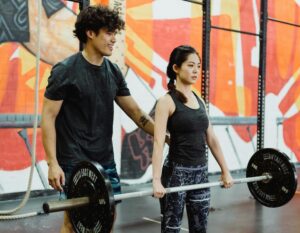



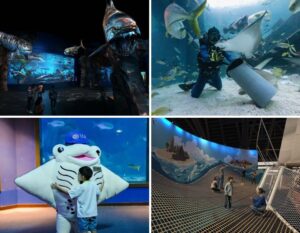


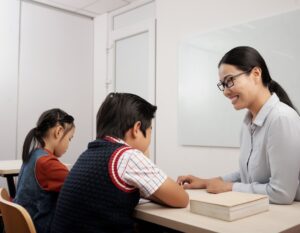



 View All
View All




